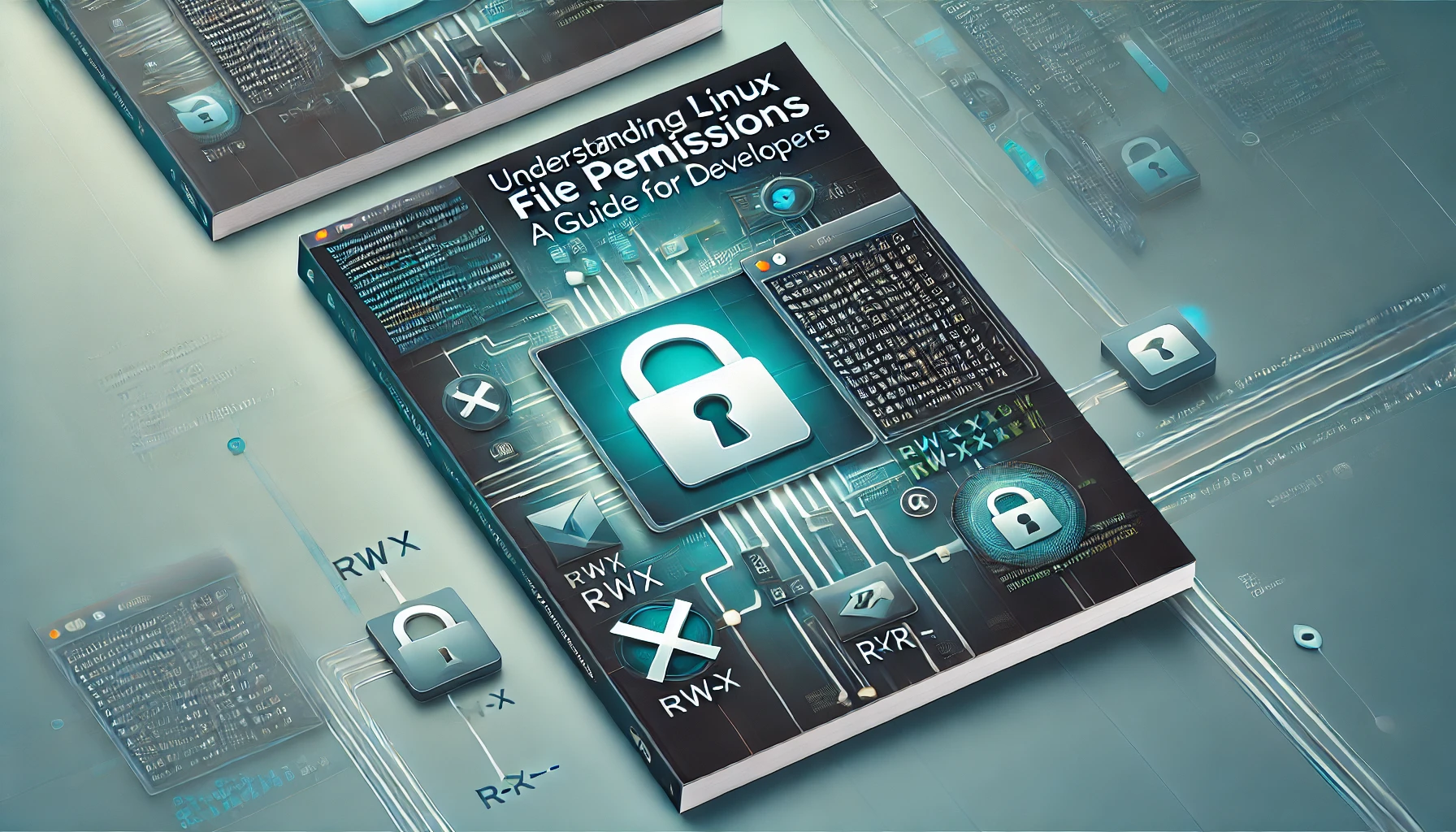Understanding Linux File Permissions: A Guide for Developers
 Trushang Suthar
Trushang Suthar
File permissions in Linux are key to keeping your files and directories secure while controlling who can access them. In this blog, we’ll explain file permissions in simple terms, show you how to calculate them, and guide you on using commands like chmod and chown.
What Are Octal Values in Linux File Permissions?
Octal values are a shorthand representation of file permissions in Linux, based on a base-8 numbering system. They use numbers 0 to 7 to define combinations of permissions for the file owner, group, and others.
Permission Values
Each permission is assigned a specific value:
4: Read (
r)2: Write (
w)1: Execute (
x)
To calculate the octal value for a set of permissions, add the values of the granted permissions:
rwx= 7 (4 + 2 + 1)rw-= 6 (4 + 2 + 0)r--= 4 (4 + 0 + 0)---= 0 (0 + 0 + 0)
Example: chmod Command
To set specific permissions, you use the chmod command followed by a three-digit octal number:
chmod 750 filename
Here:
7: Owner has
rwx(read, write, execute).5: Group has
r-x(read, execute).0: Others have no permission.
Tools for Managing File Permissions
chmod(Change Mode)
Modifies read, write, and execute permissions.Absolute Mode: Use octal values to define permissions directly.
chmod 640 file.txt # Owner: rw-, Group: r--, Others: ---Symbolic Mode: Use symbols (
+,-,=) to add, remove, or set permissions.chmod u+x,g+r,o-rwx file.txt # Add execute for owner, add read for group, remove all permissions for others.Recursive Mode: Apply changes to directories and their contents.
chmod -R 750 mydir
chown(Change Ownership)
Changes the ownership of a file or directory.chown user:group file.txtchgrp(Change Group)
Changes the group ownership of a file or directory.chgrp group file.txtumask(Set Default Permissions)
Defines default permissions for newly created files and directories.umask 022Here, permissions
022remove write access for the group and others.
Think in Terms of Groups and Values
Groups: Owner, Group, Others
Values: Read (4), Write (2), Execute (1)
Mnemonic: “RWE = 421”
Read = 4
Write = 2
Execute = 1
How to Use It
For each group, add up the values of the permissions you want:
rwx = Read (4) + Write (2) + Execute (1) = 7
rw- = Read (4) + Write (2) = 6
r-- = Read (4) = 4
--- = No permissions = 0
Now combine the values for Owner, Group, and Others to get the final octal value!
Quick Example
To give:
Owner full access (rwx = 7)
Group read & execute access (r-x = 5)
Others no access (--- = 0)
The command would be:
chmod 750 filename
Remember: “421 adds up!”
Always add 4, 2, and 1 to figure out permissions for each group. This quick mental math will save you time!
Real-Life Example: EC2 Instance with Apache2 and Laravel API
Scenario
You have an EC2 instance hosting an Apache2 web server, and a Laravel API project located at /var/www/html/api. To ensure proper functionality, you need to:
Set appropriate permissions for the project.
Allow the web server (Apache2) to read and execute files.
Grant write access to certain directories, like
storageandbootstrap/cache, for Laravel's internal use.
Steps to Set Up Permissions
Set Ownership for the Laravel Project
The web server user (commonlywww-dataon Ubuntu orapacheon CentOS) must own the Laravel project files. Use thechowncommand:sudo chown -R www-data:www-data /var/www/html/apiThis sets
www-dataas the owner of all files and directories in/var/www/html/api.Set Permissions for the Laravel Project
Usechmodto configure permissions:Assign
755to directories (read, write, and execute for the owner; read and execute for group and others):sudo find /var/www/html/api -type d -exec chmod 755 {} \;Assign
644to files (read and write for the owner; read-only for group and others):sudo find /var/www/html/api -type f -exec chmod 644 {} \;
Grant Write Permissions to Specific Laravel Directories
Laravel requiresstorageandbootstrap/cacheto be writable by the web server. Set permissions accordingly:sudo chmod -R 775 /var/www/html/api/storage /var/www/html/api/bootstrap/cacheVerify Permissions
Ensure the permissions are correctly applied:ls -ld /var/www/html/api ls -ld /var/www/html/api/storage
Conclusion
File permissions in Linux are important for keeping your applications secure and working properly. By setting the right ownership and permissions, you can make sure your web server has the access it needs while keeping sensitive files safe from unauthorized users. Learning how to manage file permissions is a basic but essential skill for every developer using Linux.
Subscribe to my newsletter
Read articles from Trushang Suthar directly inside your inbox. Subscribe to the newsletter, and don't miss out.
Written by

Trushang Suthar
Trushang Suthar
Code is like a puzzle—sometimes you just need to step back, take a breath, and the solution clicks.